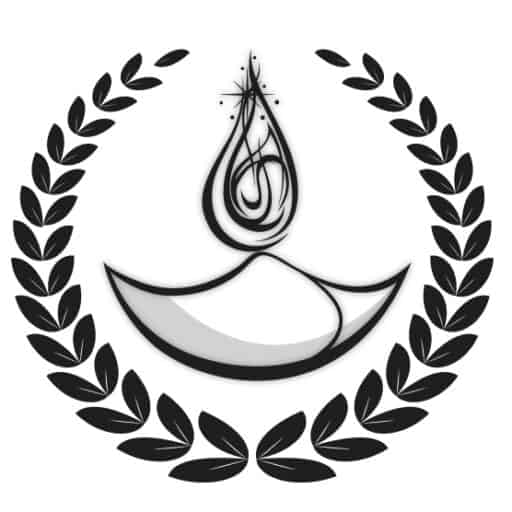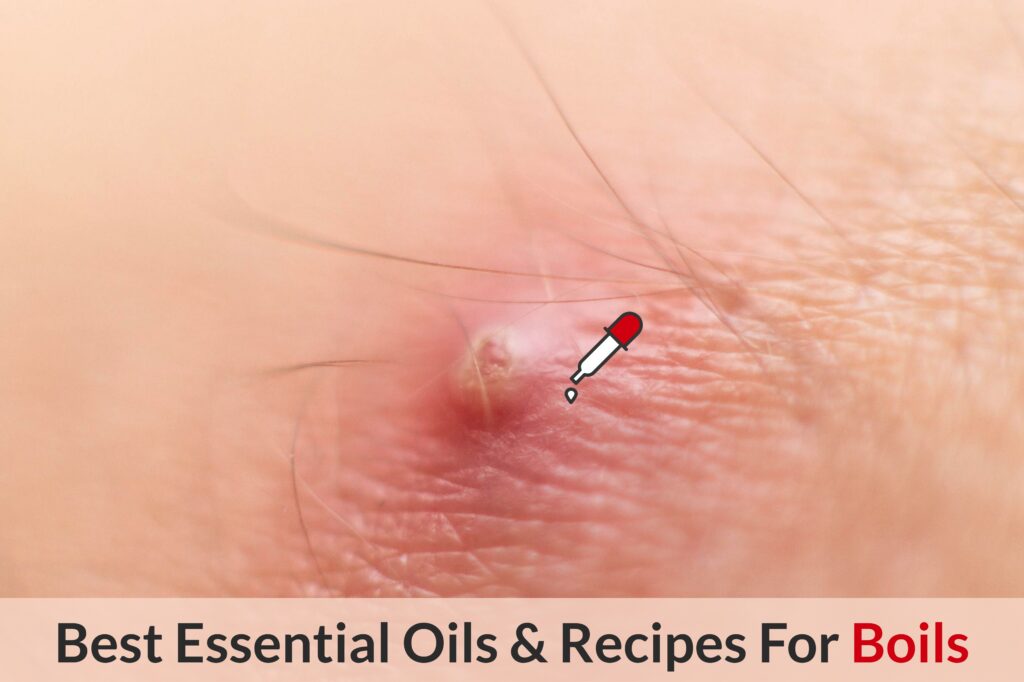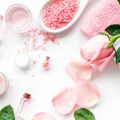You know how some problems in life start small, but quickly take on a large and ugly form? Well, if I were to draw up a list of all such issues, boils would sure figure in it.
Hi there, I am Olivia and today I am going to talk about a problem that is both hard on the eyes and part of the body that it afflicts.
I am sure you will agree with me when I say that few health issues or skin problems evoke the “ewww” response as much as a turgid, ready to spray pus all over, large, infected and pus-filled boil.
Although boils don’t normally present a major health concern, except for in some cases and I will talk about those later, they are painful and embarrassing. And, I have not even got to the fun bit as yet.
There is nothing that modern medicine can do about these suckers till they fill up with pus. Till then, you just have to shut up and put up with the pain and redness.
Imagine, having to wait for something awful to manifest in all its disgusting-ness, before you can treat it. I’d say it is hard on both the body and the mind, wouldn’t you? And that is what brings us to essential oils.
In this all-in-one guide to treating and preventing boils with essential oils, I am going to answer just about every question that you ever had about this painful and gross problem. First up, let us talk about…
What Are boils?
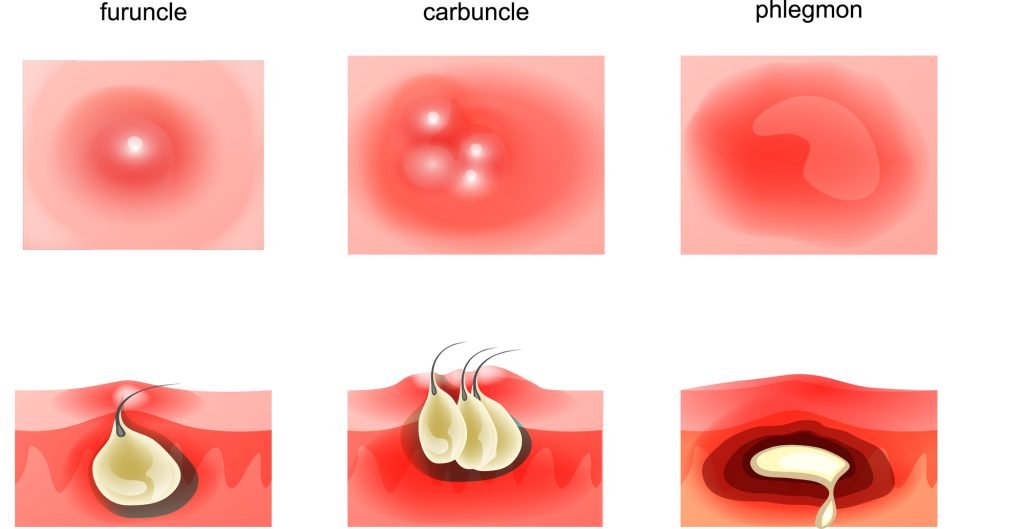
Simply put, it is a bacterial skin infection. So, like all others, it starts with localized inflammation, redness and tenderness. Typically, the critters make their presence felt in a pea-sized are, which eventually becomes hard, raised and increasingly tender.
That is when your immune system decides to show the invaders their place and attacks in full force. On the outside this is seen as the boil coming to a head.
The inflamed area goes from hard to soft, and the accumulation of pus becomes visible. This increases the pain and you may even experience other symptoms of inflammation. With pus in the picture, the boil becomes what is scientifically termed as an abscess.
Boils are pesky little buggers and will appear on the most inappropriate parts of your body. It is like they are deliberately trying to make your life miserable. So, you can expect them on your face, in the groin, on the trunk, on the neck and best of all, there are also boils between the butts. The moral of the story is that boils erupt to disrupt your regular life.
Sitting, walking, wearing your clothes, moving your neck, shaving, applying skincare products and makeup and all the regular day-to-day tasks can turn into an issue because of boils. And that is why you cannot wait for a boil to resolve on its own. There are also those that won’t go away on their own, which brings me to the different types of boils:
1. Furuncle
That is your normal boil, pea sized, full of pus and painful. But, it usually goes away in about 10-15 days, even if you don’t treat it. If you need reprieve faster, then you will need outside intervention.
2. Carbuncle
All those terrible facts about boils, multiply them by 10 and you get a carbuncle. A larger abscess that involves multiple infected hair follicles, a carbuncle seldom goes away on its own. It also goes without saying that the healing time is longer given the greater extent of infection and inflammation.
3. Carbunculosis or furunculosis
These are simply chronic versions of the conditions discussed above. Often the boils appear without a discernible cause. Needless to say, the only way to stop the recurring issue is to show it “who’s the boss”!
4. Hidradenitis suppurativa
Again, multiple boils are involved in this form of the condition but they occur in the most sensitive and infection prone area of the body – the armpits and the groin. Also this time, the infection targets not the hair follicles but the sweat glands. The infection is so severe that antibiotics alone cannot contain it and surgery becomes the requirement of the day. The only choice is to remove the infected sweat glands to stop them from getting infected and inflamed.
5. Pilonidal cyst
I already told you about this one; this is the notorious boil between the butts. These boils start off as an infection of the hair follicles. However, direct pressure when you sit and irritation as clothes rub against the cyst, increase inflammation and the scope of infection, leading to large, tender and extremely painful nodules.
6. Cystic acne
Different from the comparatively tame pimples, cystic acne is deeper, more painful and causes damage to tissues that lie underneath the dermal layers.
What Causes These Pus Filled Abominations To Appear?
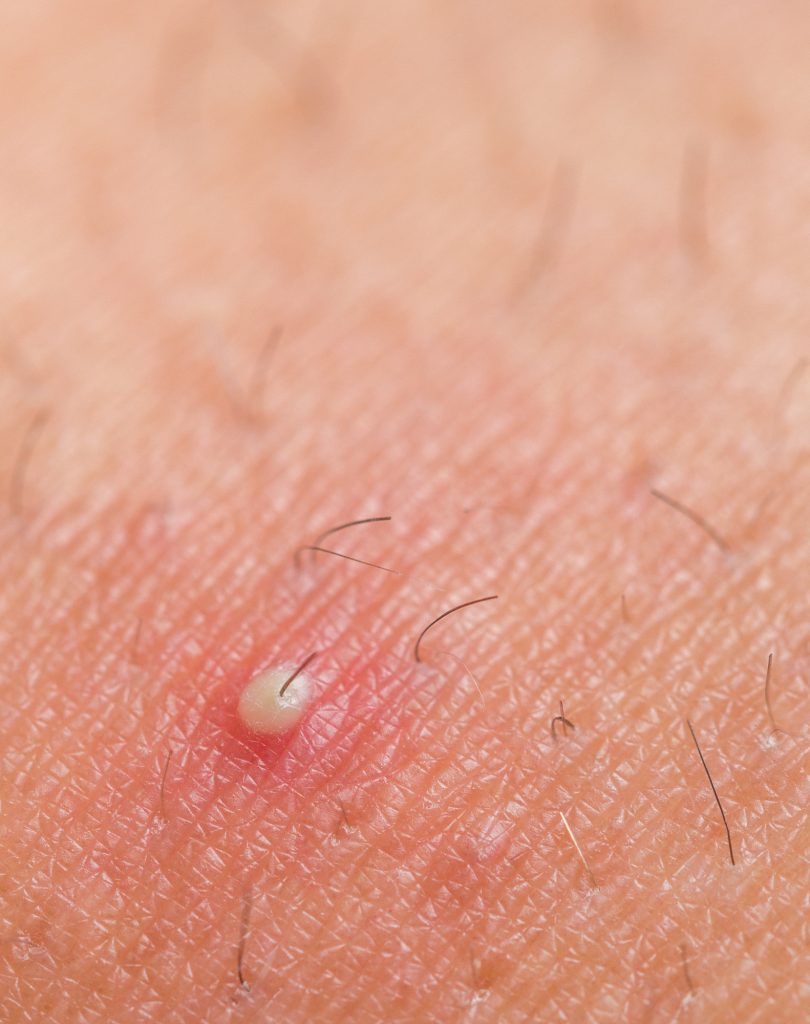
There are many factors that lead to the appearance of boils, but at the end of the day it all boils down to infection and your body’s inflammatory response to something foreign.
Now, this could be critters that enter the body through hair follicles or a splinter or any other foreign matter. In other words, even the smallest of cuts or scrapes have the potential of turning into a boil if they become infected.
As far as the infection is concerned, boils are attributed to staphylococcal bacteria. These microorganisms are a normal part of the dermal flora in a lot of people and can even be found in the upper respiratory tract and the gut.
The problem starts when these critters grow in number and either breach the body’s natural defense system or take over the tissue they live on.
Staph infections cause a range of ailments, and an abscess is just one of these. There is also a super-bug version of this bacterium, which is resistant to antibiotics. Currently, there is no inoculation available to keep this bug at bay. Although anybody can face a staph infection, some people are more vulnerable to these bugs like those who:
- Suffer from diabetes.
- Have a problem with their immune system.
- Suffer from an ailment that compromises the immune system.
- Have poor hygiene habits.
- Suffer from nutritional deficiencies or poor nutrition.
- Have recently been exposed to skin damaging chemicals.
- Suffer from a disease that reduces the production of antibodies.
- Use immunosuppressant meds like cortisone pills (prednisolone) and chemotherapy drugs.
When Do Boils Call For A Doctor’s Visit?
When things start deteriorating in terms of both infection and inflammation, you will see distinct signs such as:
- Swollen lymph nodes
- High fever
- Red streaks on the skin around the boil
- Severe pain
- Appearance of more boils
- Generally poor health
Even if you are dealing with a single boil, it would be best to see a doctor if you have a history of:
- Diabetes
- Heart murmur
- Autoimmune disorder
- Chemotherapy
Also, see your doctor if the boil is near the spine because in worst cases the bacteria can infect the spinal cord. Furthermore, if the boil is on the face, there is always the risk of scarring, which means it would be best to get the infection resolved before it causes tissue damage.
Is A Boil Simply A Pimple?
Well, let me put it this way, a pimple would qualify as a boil but vice versa is not always true. The inflammation runs deeper in case of boils and it is certainly more intense, as is the infection. In fact, boils are what can be called a true infection while pimples simply start with clogged pores, which in turn are a result of excess sebum production.
So, pimples will show up on areas of the body that have more than the normal number of sebaceous glands like the neck, chest and the back. In contrast, boils have nothing to do with sebum or pore plugs, so they can appear on any part of the body.
How Do You Know If An Ugly Boil Is On Its Way?
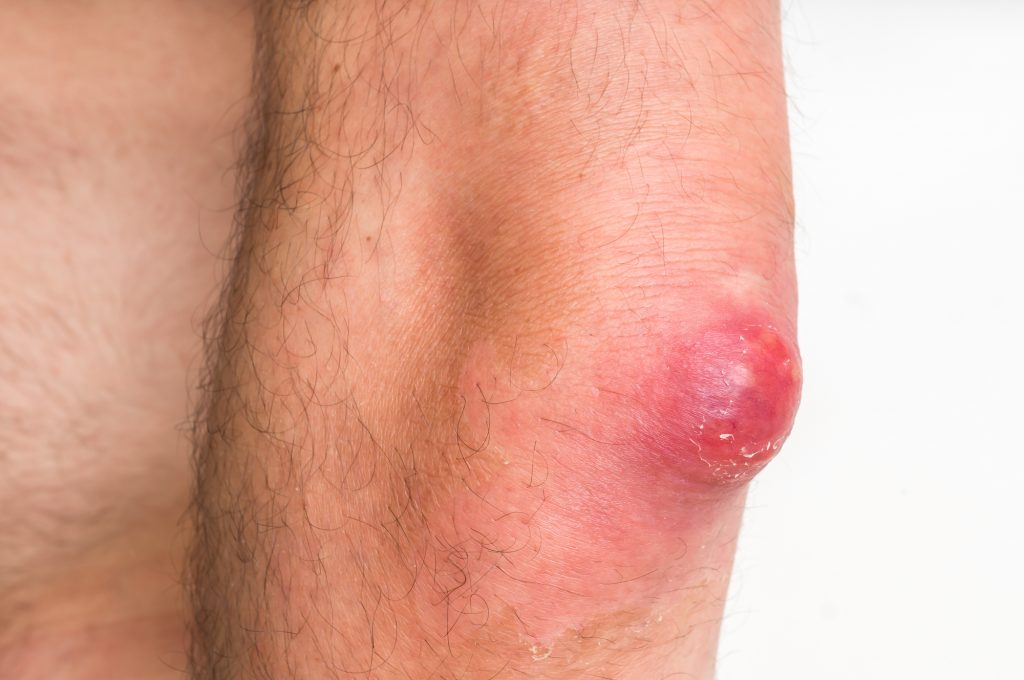
Most boils will come to head eventually and develop that ugly, pus-filled, yellow peak or crust. However, they often start with inflammation and even itching or pain. This is the point at which you actually stand a chance of stopping the big boil from making its appearance.
If a pea or even a quarter sized area starts throbbing, becomes red, feels warm to touch and eventually you feel stabbing pains and even the lightest touch leads to significant pain, it is most probably a boil informing you of its impending visit. In some people, a boil may announce its arrival with a fever and excitability. In a few days, the reddened area develops a lump that feels hard and painful.
After about a week of this development, a pus-filled head becomes visible and this is when the pain peaks. Both the infection and the pain lead to swollen lymph nodes. Depending on the type and extent of infection, more boils may develop in the surrounding area.
What’s The Worst Thing About Boils!
If the site of an oozing boil does not keep people away from you, the fear of catching the infection sure will. Yes, boils or more accurately, the pus inside them is highly infectious. If it seeps down your skin, there will be other boils and if you don’t wash your hands well enough, those boils are going to show up on every part of your body and everybody you touch.
You get the point, don’tcha?
How Will Your Doctor Deal With A Boil?
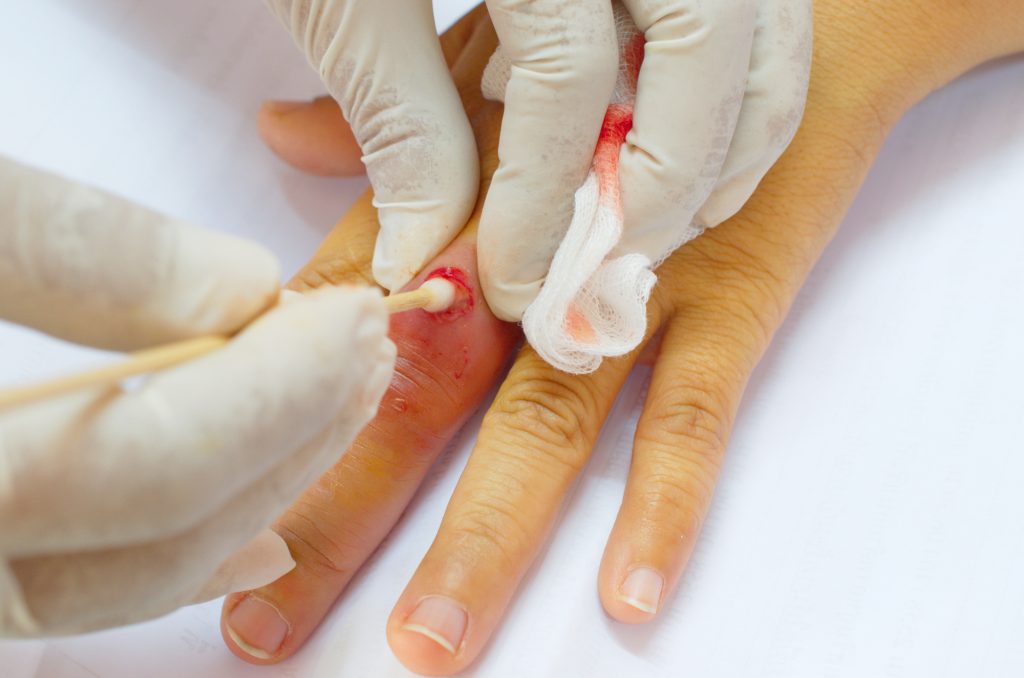
Prevention
If you frequently suffer from boils in certain areas of the body, your doctor may ask you to use special antiseptic cleansers that will reduce the number of dermal bacteria. Frequent exfoliation will also be recommended to prevent oil plugs. But, all of this works when you are not already dealing with a boil.
Treatment
Once the abscess sets in, there is only thing that can be done – the pus has to be allowed to get out. This usually means that either a needle or a scalpel has to be used to cut open the skin. The area will be numbed with a topical anesthetic before the procedure.
If the infection runs deep, gauze may be inserted into the incision to allow draining to continue. But, that is not where it stops!
If you have a series of boils or a carbuncle, you will also need intravenous antibiotics and then topical antibiotics once the infection comes a bit under control. The question is do you really want to go through all this trouble? If answered that with a loud “NO”, then it is time to start talking about how Mother Nature can come to your rescue!
Why Do Essential Oils Work Against Boils?
Ask not why they work on boils, instead ask why they will not! Essential Oils are only about the best bug killers out there and while they show those critters their place in this world, they also tackle the inflammation, pain and redness.
Plus, they accelerate healing once they push the bugs out, which means lower risk of scarring. Furthermore, they are 100% natural, so you don’t have to worry about side effects. In fact, your boil can be in any stage of the inflammatory and infection cycle and essential oils will be able to help.
If that is not enough, these potent aromatic extracts also help to strengthen the immune system, and draw out toxins from the boil and from the body. In fact, essential oils regulate the working of the lymphatic system and promote better drainage. With the plumbing system of your body in top shape, you can be sure that toxins will get purged faster.
The 10 Best Essential Oils For Boils!
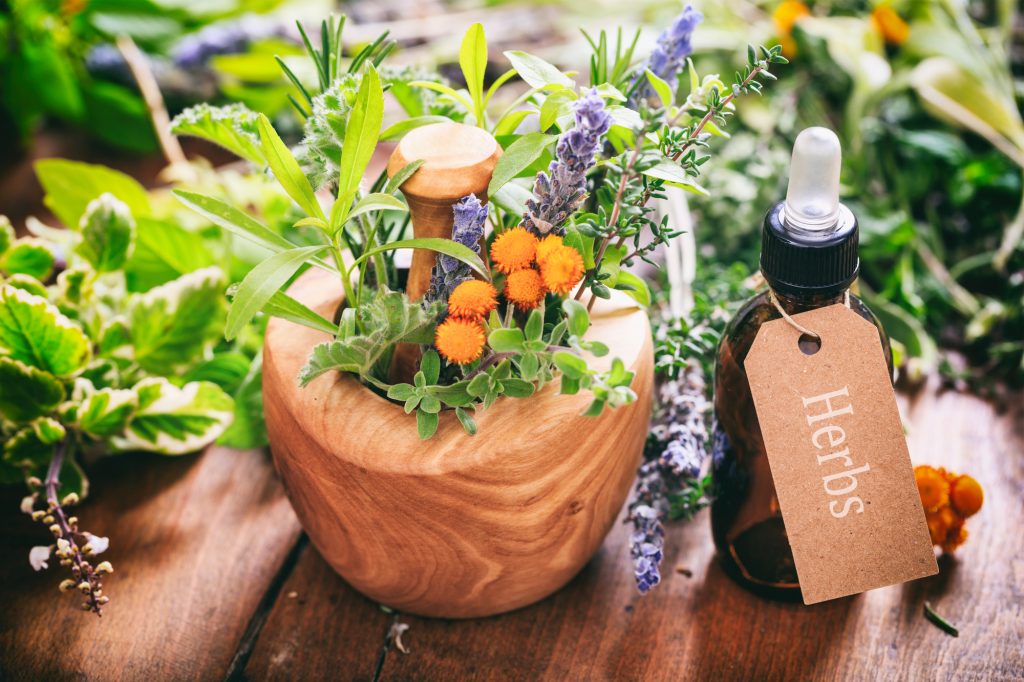
1. Geranium: This aromatic extract helps to soothe inflamed skin and boosts the natural skin healing process.
2. Clove: Rich in eugenol, the pain dulling ability of this oil is at par with that of lidocaine, a topical anesthetic.
3. Tea tree: One of the most potent natural substances for bacterial infections, tea tree oil helps to kill the germs and improves your body’s ability to fight these critters. Plus, it aids in faster wound healing.
4. Oregano: This oil contains a compound called carvacrol, which is known to fight even antibiotic resistant bacterial strains.
5. Lavender: A gentle and soothing oil that helps to calm inflamed skin, lavender essential oil helps to speed up the healing process and even aids in drawing out the infection.
6. Chamomile: Another excellent natural healer, inflammation, pain and soreness don’t stand a chance against this azulene rich oil.
7. Lemon: The anti-inflammatory and antibacterial properties of lemon essential oil are unrivalled. Moreover, it helps to stimulate lymph drainage.
8. Rosemary: Apart from its ability to prevent oxidation and oxidative stress, this essential oil also helps to fight infection-causing germs and prevents scarring.
9. Bergamot: This is another essential oil that not only stops bacterial growth but also helps with the pain of boils. It is a relaxant and help to heal wounds faster and minimizes the risk of scarring.
10. Bay laurel: An age old treatment for cysts and boils, this essential oil not only has antibacterial properties but also helps to desensitize the affected nerves. So, while it heals the wound, it also provides pain numbing effects.
Top 7 Essential Oil Recipes For Boils
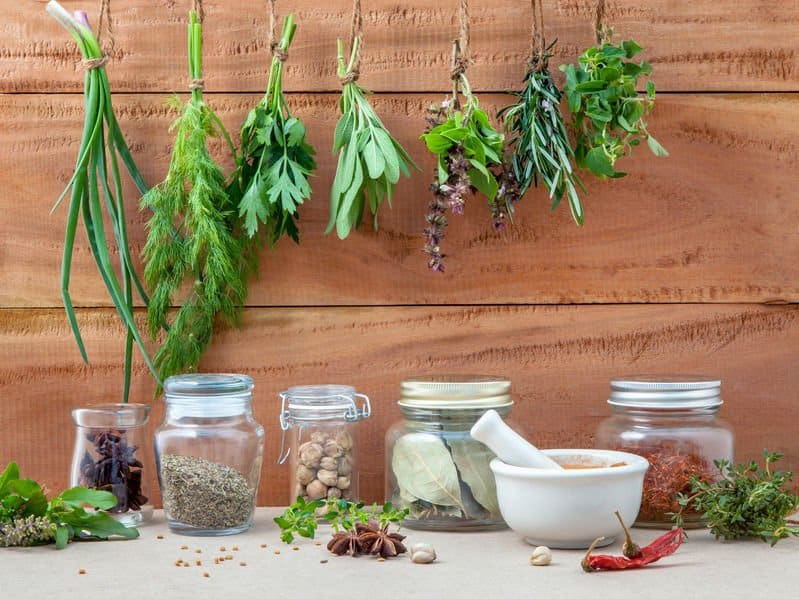
1. “Boil stop right there” ointment
I already told you about how you will know a few days in advance of the imminent arrival of a painful and pus filled boil. Right when you start to feel the itching and throbbing and the skin gets red and warm, use this ointment to stop the critters from doing more damage. You will need:
Ingredients:
- 30 ml olive oil or 1 ounce kokum butter
- 4 drops each of oregano, rosemary, lavender essential oil
- 7 drops each of lemon and chamomile essential oil
Method:
For those of you who already know a thing or two about essential oil blends, the high rate of blending at 4% may come as a surprise. But, at this stage what we are trying to do is control the inflammation and kill the infection on the double, so this calls for the use of a strong formulation. Use this blend no more than 2 times a day and if the area is itchy, add 4 drops of peppermint oil to the recipe.
That said, it is very easy to make this oil/ointment. If using kokum butter, melt in a double boiler and add the essential oil as it cools. Whip the mixture till you get a creamy, fluffy preparation. If using oil, add all the lipids together and mix well with a glass stirrer. Pour the mixture into an amber glass jar/bottle. Apply gently on the infected area after a shower or after cleaning it with warm salt water. Try using Himalayan Pink Salt for the cleansing solution instead of regular table salt.
2. Go away germs spray
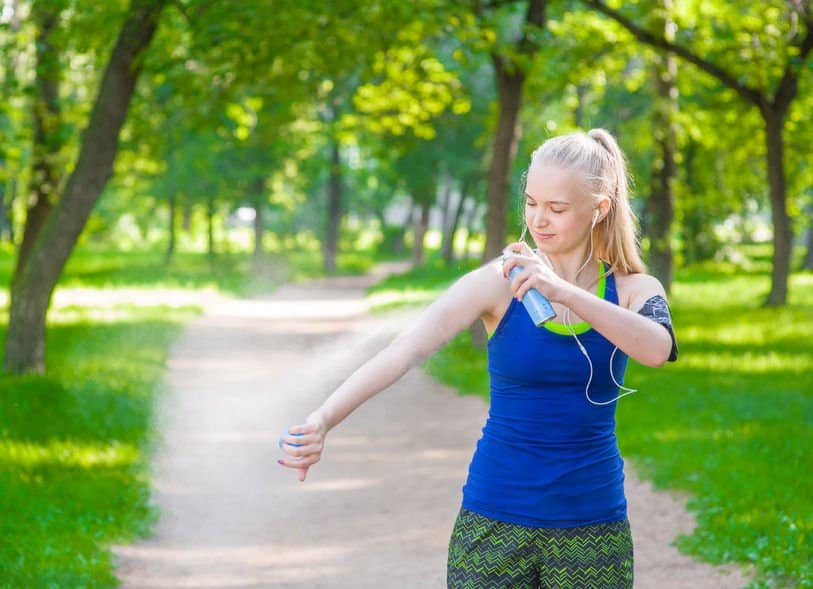
This spray will keep the critters in check at all stages of the infection and inflammation cycle. Whether the boil is still just a red bump or has started oozing, use this spray to ensure that the prevention does not spread to the surrounding areas. You will need:
Ingredients:
- 1 cup mixture of distilled water/helichrysum hydrosol (preferred) and witch hazel (1:1)
- 1 tsp calendula tincture
- 10 drops each of tea tree and rosemary essential oil
- 5 drops lavender and bergamot essential oil
Method:
You will need a glass spritz bottle for this one. Once you have the container ready, simply put all the ingredients in and give them a good shake. The mixture is done right if you don’t see large oil droplets floating on top. Of course, you will need to shake the bottle every time before use.
Spray on the boil and on the surrounding area and then dab off the dripping fluid with soft tissue. You don’t have to wipe your skin dry, just contain the dripping and leave the rest to work on the boil and the critters.
3. Toxin pulling poultice
Once your body’s immune mechanism kicks in, those white blood corpuscles will go on a critter-killing spree, which will cause the release of toxins. This poultice will help to draw out the toxins and keep the inflammation in check. You will need:
Ingredients:
- 1 medium sized potato
- ½ ripe banana
- ¼ tsp turmeric powder
- 5 drops each of thyme and rosemary essential oil
Method:
Skin and grate or grind the potato and the banana till you get a mush. Add turmeric and the essential oils to the mash and mix well. Put on a small square of breathable fabric and warm for a few seconds in the microwave. Do not cook the mixture; you just need it to be warm.
Apply on the boil with the mush side in contact with your skin. Cover the warm poultice with medical tape to hold it in place. Keep it on the boil for at least 2-3 hours. You can wash the affected area with warm salt water or just warm water once the poultice has been removed.
4. Warm bath to bring the boil to a head
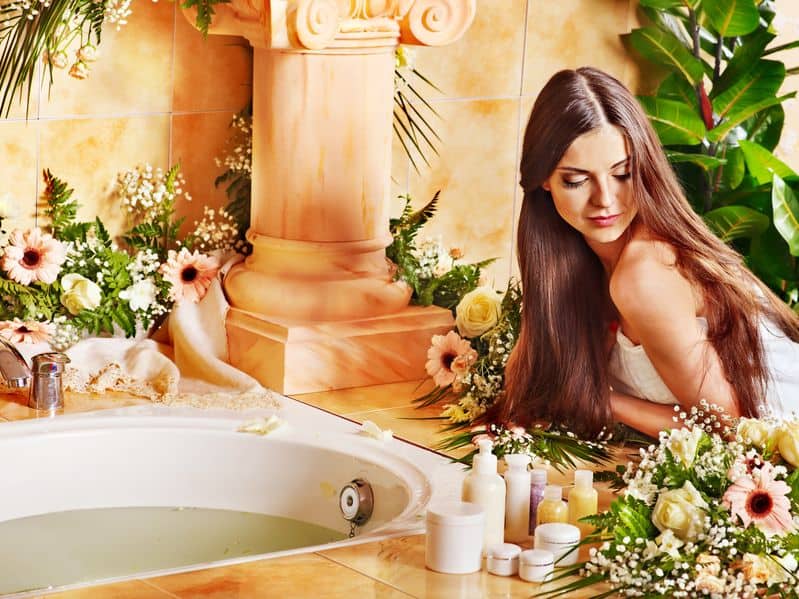
A boil will typically live out its life in 10-15 days in which time it will go from redness and itching to a lanced and oozing protrusion. If you want to speed things along and want it to come to head sooner, use the warmth of this bath twice a day and you will see a visible head in a matter of 1-2 days. You will need:
Ingredients:
- 2-3 cups of water
- 1 heaped tablespoon of Himalayan pink salt
- 3 drops of clove essential oil
- 4 drops each of bay laurel and geranium essential oil
Warm the water till it feels hot to touch but is not boiling or blistering hot. Add the salt to it along with the essential oils stir well till you don’t see the oil droplets floating on top. Soak a clean cloth in the water and wring out.
Apply the warm cloth directly on the boil. Repeat till the water cools. Do this 2-3 times a day and within a day or two the boil will come to head.
5. Paste to draw and pull the pus-head out
Once the pus-head becomes visible, you can wait for the boil to lance on its own or try this paste. Going to the doctor is the third option but under no circumstances should you use a needle and try to lance it on your own.
Surgery, however minor it may be, is not a DIY process. Please do heed to this bit of advice because any such stunt will increase the risk of more wide spread and dangerous infection. That said, to make this paste, you will need:
- 1 tbsp clay (Any clay that you can get your hands on will do. However, bentonite with its mineral content and astringent ability works the best)
- 1 tsp neem leaf powder (This can be ordered online and can be used in a host of ways, so you should always keep a small batch of this herb around)
- ½ tsp turmeric powder
- 1 tsp Echinacea herb powder (optional)
- 5 drops each of rosemary, bay laurel and oregano essential oil
- Water as required
Method:
Mix the clay with the herbal powders and add the essential oils to them. Next, start by adding 2-3 tbsp of water and mix well. Continue adding water and whisking till you get a mixture that has the consistency of toothpaste. Apply in a thick layer on the boil, covering the inflamed and red area around the affected part as well. Stay put till the paste dries and then go to bed as usual, keeping it on overnight.
In the morning, use wet cotton wool to wipe the paste off your skin. Do not try to peel the dried paste with your nails or in any other way. This will just cause more bruising, possibly bleeding and increase the risk of infection. Instead wipe it off gently. Typically the head comes off with the paste by the second application. If this happens, use cotton wool soaked in an antiseptic to wipe out the oozing pus.
Apply gentle pressure on the sides of the pus head to assist the outward flow of the infected fluid. Once the oozing stops, wipe the boil and the surrounding area, with fresh cotton wool soaked in an antiseptic fluid. Use some of the disinfectant spray on the boil and in the area around it to aid in healing and to kill the germs.
Do not forget to clean the boil with the germ killer spray or a regular antiseptic lotion twice a day once the boil has lanced.
6. Pain containing blend
The pain will be the most intense when the boil is coming to head and once it fills up with pus. This blend will ease the discomfort and control the inflammation. You will need:
Ingredients:
- 30 ml (1 ounce) castor oil
- 3 drops each of bay laurel and peppermint oil
- 2 drops clove oil
- 4 drops each of bergamot and lavender essential oil
Method:
Mix the oils and store the blend in a dark glass bottle. To apply, use about a drop on the affected area, rub in gently on the inflamed, red circle around the head of the boil.
You can also apply directly on top of the boil. Do not press the head, apply with gentle strokes and leave it be. For best results, use the blend 2-3 times a day. Expect to feel alternate cooling and warming sensation as the essential oil blend works to dull the pain transmitting ability of the nerves.
7. Quick healer blend
This recipe is to be used once the boil come to head and lances on its own. Eventually, a scab will form on the site and the redness will begin to recede. With this blend you can speed up the process and ensure minimal scarring.
You will need:
- 30 ml carrier oil of your choice (I prefer almond oil for this recipe)
- 5 drops each of lavender, chamomile and geranium essential oil
- 3 drops of rosemary essential oil
Method:
Mix and store in a dark glass bottle and apply as you would any ointment. Use it twice a day for best results. The wound will get itchy at some point as your skin heals. Whatever you do, don’t scratch. Instead add 2-3 drops of peppermint essential oil to the blend to get a cooling sensation that will treat the itching.
Home Treatments To Treat And Prevent Boils

1. Prevent boils with good hygiene practices
Keep your surroundings and yourself clean to keep boils out of your life. Beddings, clothes, underwear should be changed and washed regularly. Personal hygiene and good health are just as important. A shower a day will keep the boil causing critters away and if you are healthy, your body will be able to ward off any bacterial infection.
2. Remember that boils are infectious
If a family member or a person you are in close contact with is suffering from a boil, wash your hands after physical contact with this individual. If you have a boil do not get lazy about disinfecting the affected area twice a day. If the abscess is oozing, use a disinfectant fluid to clean it and when washing your hands and your clothes.
3. Build resistance to bacterial attacks from the inside
This is a treatment that comes from the East and one that has been used for hundreds of years to deal with all types of wounds and skin problems. Add ½ tsp of turmeric or 2-3 drops of turmeric essential oil to a glass of warm milk (dairy, soy, almond, coconut) along with honey or a natural sweetener to taste. Mix and drink up. Enjoy the golden beverage everyday till the wound heals.
4. Go slow on the sugar
You may have already heard that most health issues have their roots in excess sugar consumption. The new white addiction, as it is called, does truly4 damage your body and all your internal systems in a whole lot of ways. In fact, if you suffer from recurrent boils, sugar may be the cause of the problem. So, at least cut down on your sugar intake to no more than 2-3 tsp a day.
On A Parting Note!
The problem with boils is that you never know when the infection can get out of hands and travel down deeper into the body. There have been cases when a simple boil turned into an untreatable infection and eventually caused death. Why leave anything to chance, when Mother Nature has given you the solution to stop these critters in their tracks?
So, if you have a boil or it feels like one is going to pop up, start treating it proactively. Go ahead and show those germs that you mean business and don’t want them wreaking havoc on your life. And with that, I wish you all a germ free life full of wonderfully enticing aromas!
